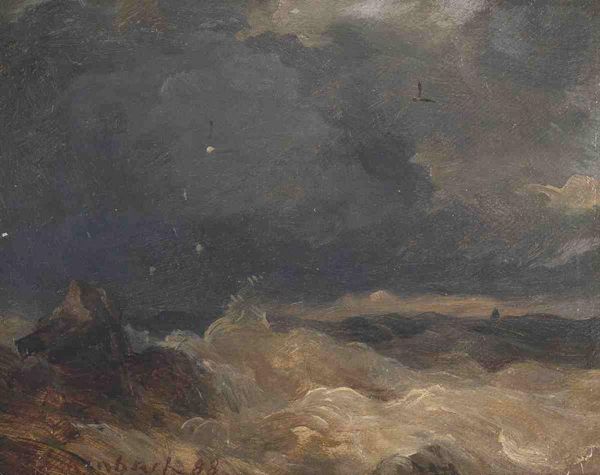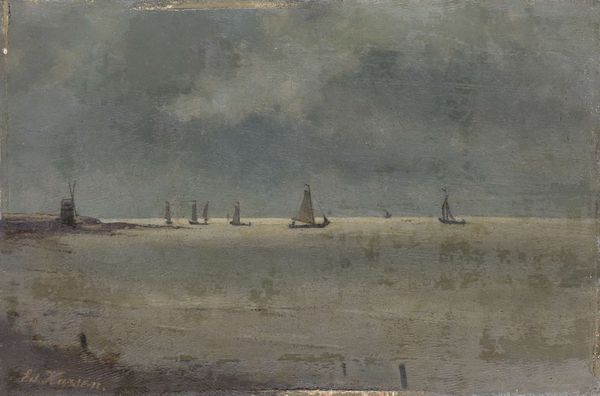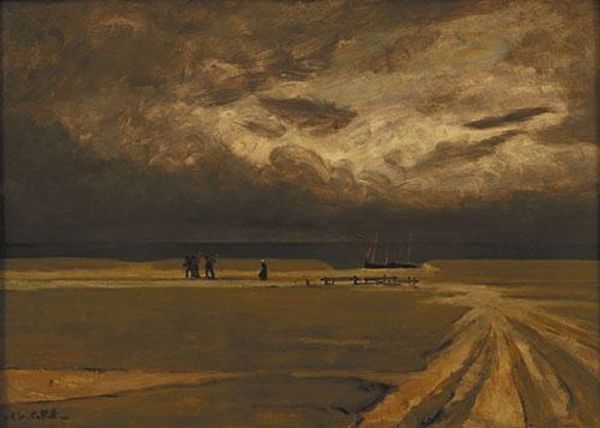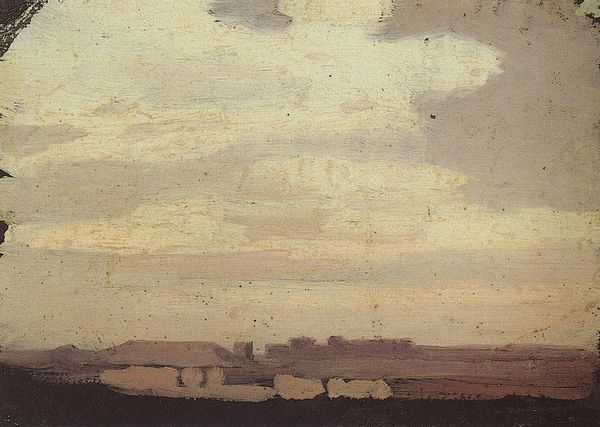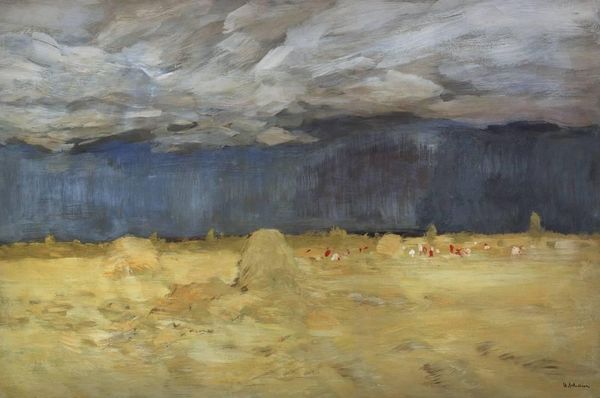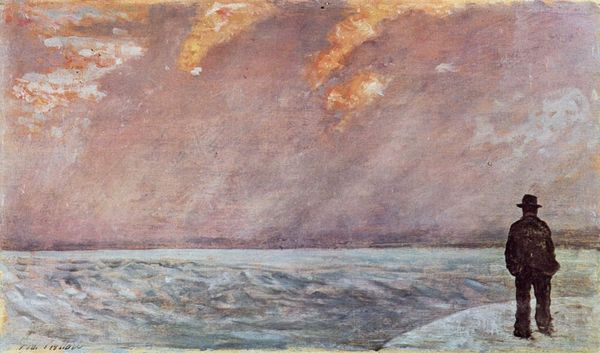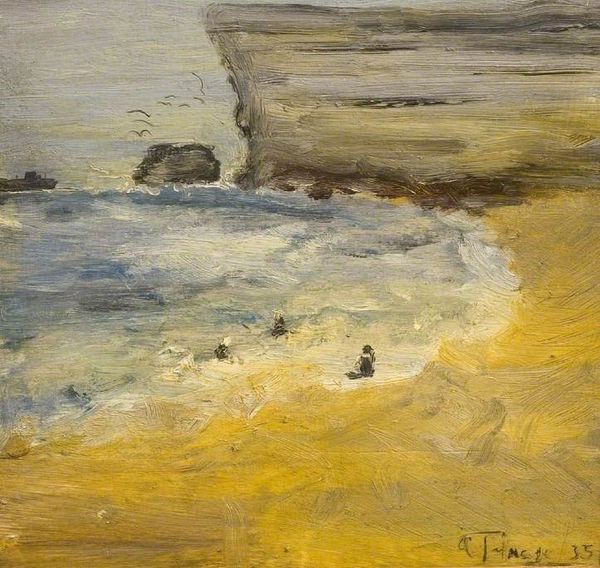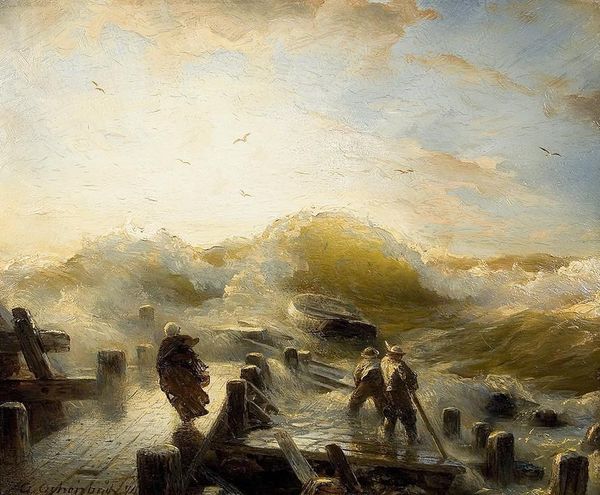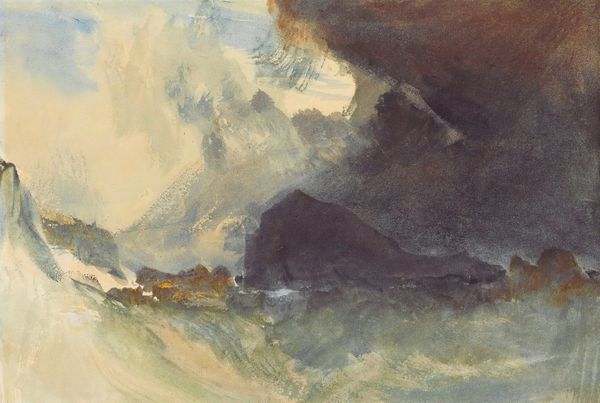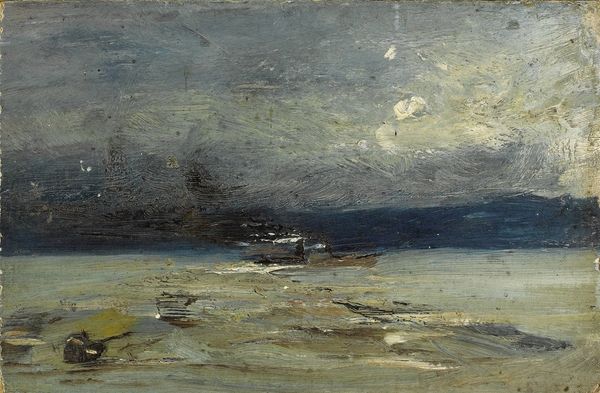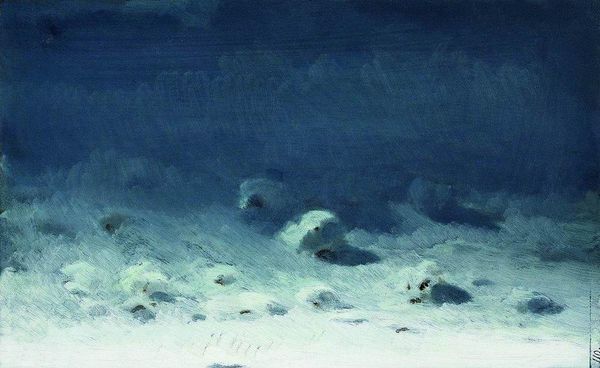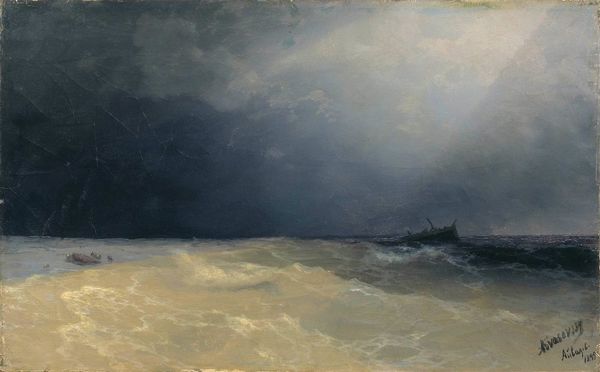
painting, oil-paint
#
sky
#
painting
#
oil-paint
#
landscape
#
oil painting
#
expressionism
Copyright: Constant Permeke,Fair Use
Curator: A somewhat somber scene, isn't it? It immediately evokes feelings of the sublime; something like confronting the raw power of nature in its most unyielding form. Editor: I find the materiality and application more interesting than feelings of grandeur; the thick impasto, the limited color palette – all very intentional, of course, but speak to the working conditions and perhaps limited access to diverse materials. Curator: Indeed. What we have here is Constant Permeke’s “Marine, temps gris,” painted in 1924. It exemplifies Expressionism through its use of oil paints. It’s hard not to read the emotional charge of that period into these choices. Editor: He understood his materials, for sure; his choices clearly mirror a kind of economy that makes visible how a post-war artist created a certain look, out of both necessity and choice. Those somber grays definitely evoke a working class perspective too. Curator: You know, seeing these muted tones, I cannot help but read the piece in relation to the prevailing atmosphere after the First World War—a pervasive sense of loss and the reevaluation of humanist ideals, specifically focusing on the working conditions of laborers within Belgium after the conflict. Editor: That's fair. I mean, if you look at the brushwork, it feels so grounded—almost tactile. How the paint is applied gives a very strong sense of weight and volume. It mirrors the labor of creating this landscape and represents how closely this artist relates to working communities. Curator: Right, and even beyond the specificities of Belgium's postwar atmosphere, these visual decisions contribute to a wider dialogue surrounding themes of collective trauma and identity formation amid times of political, economic, and cultural shifts. Editor: For sure, it would be simplistic to dismiss Permeke's artistic process here, reducing the final piece merely to emotions of the time, because the final work provides the historical, emotional and material experience. Curator: Looking at this today I find the piece makes you consider your relationship to the landscape and to its inhabitants. There's a feeling that permeates this piece, like a conversation between land, labor, and existence. Editor: Yes, an exchange materialized through technique and application in 1924 but speaking directly to viewers today.
Comments
No comments
Be the first to comment and join the conversation on the ultimate creative platform.
